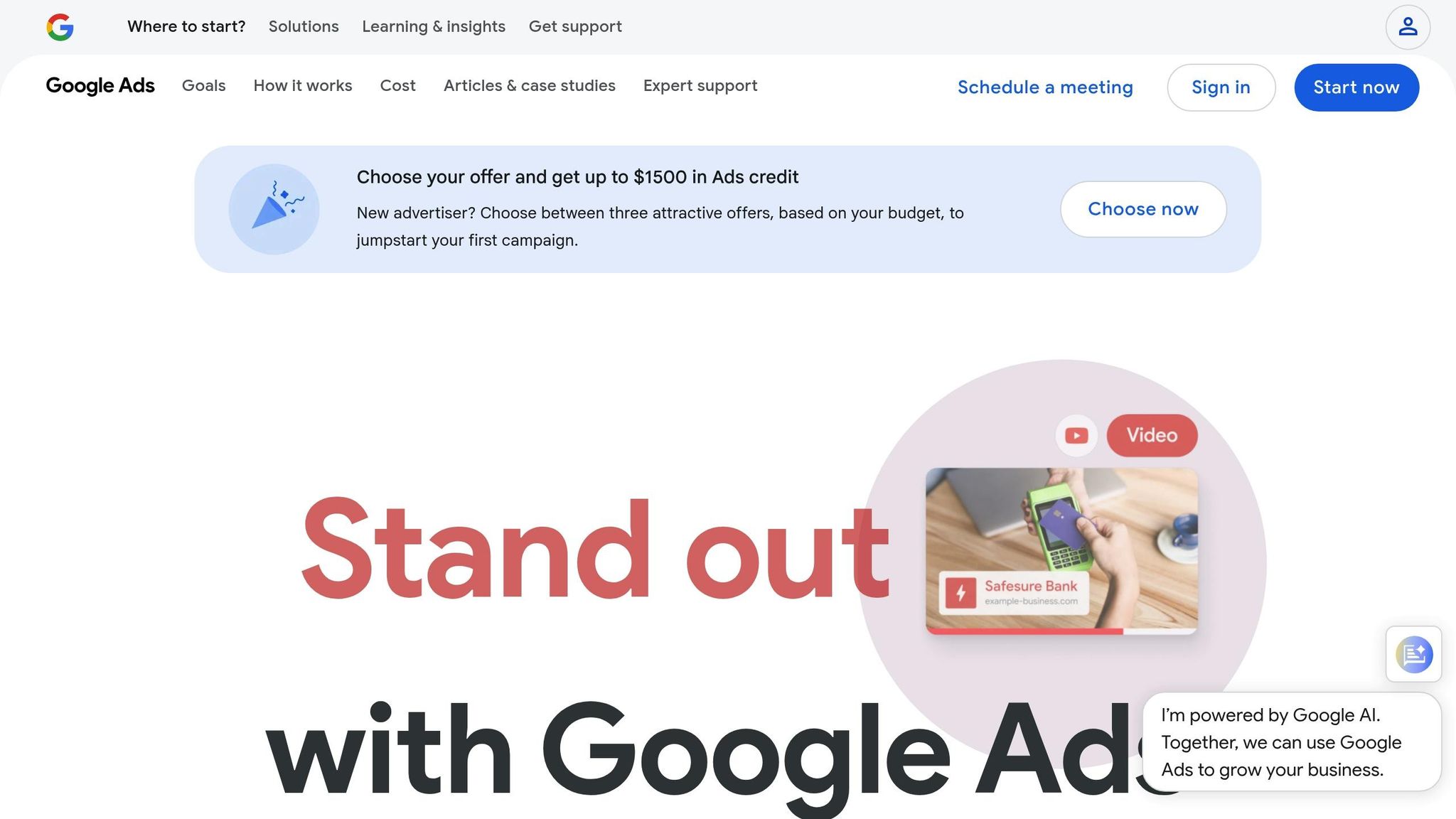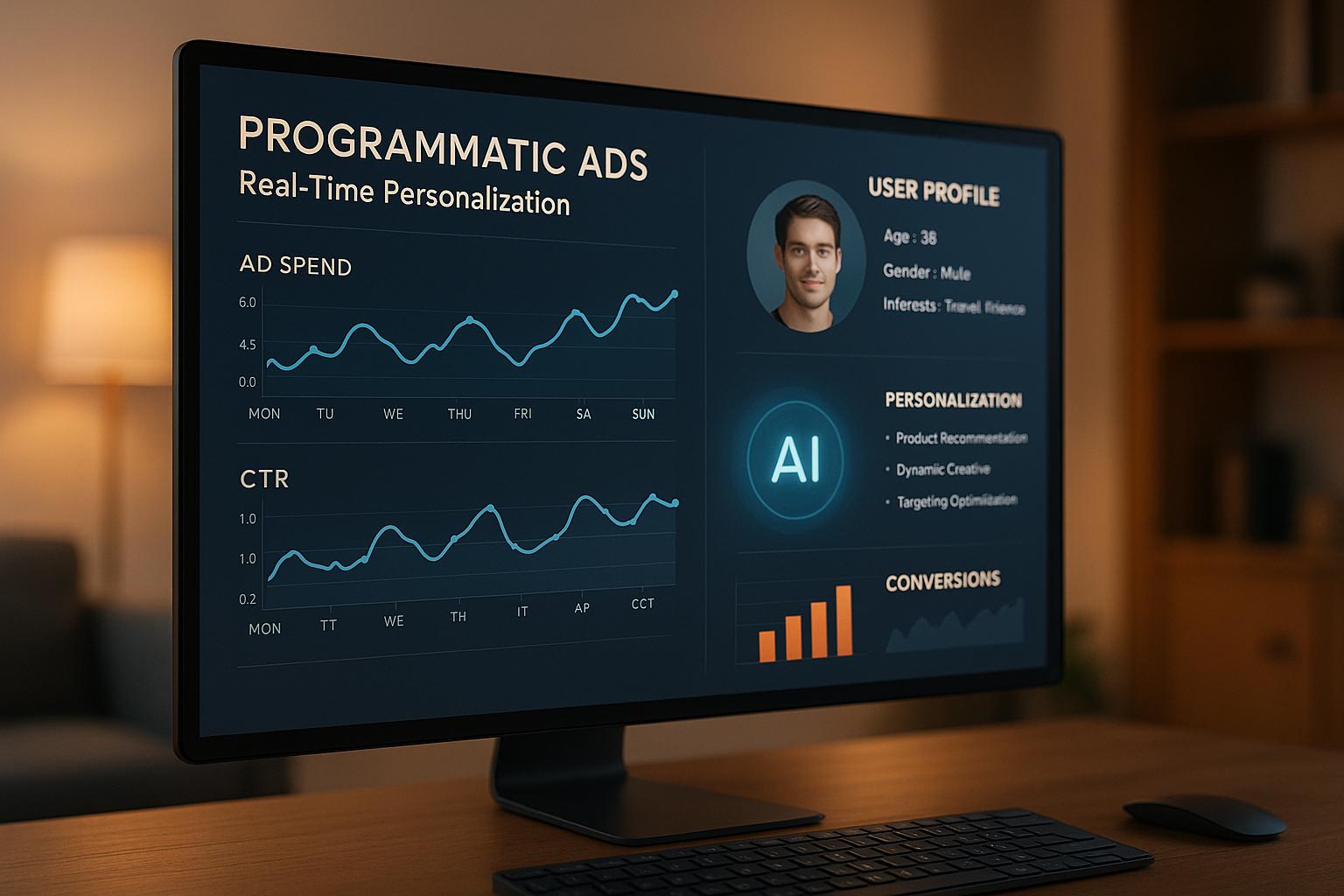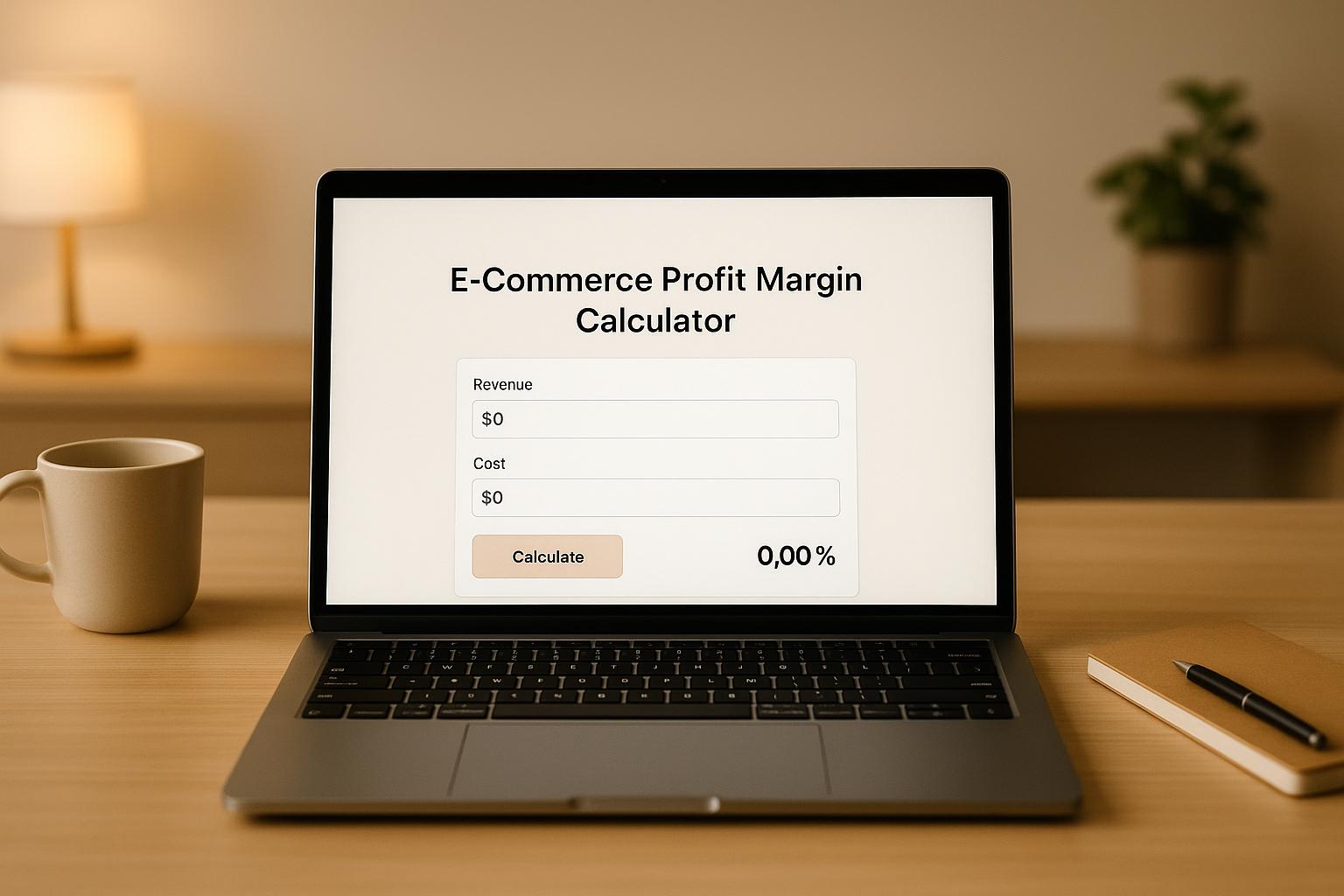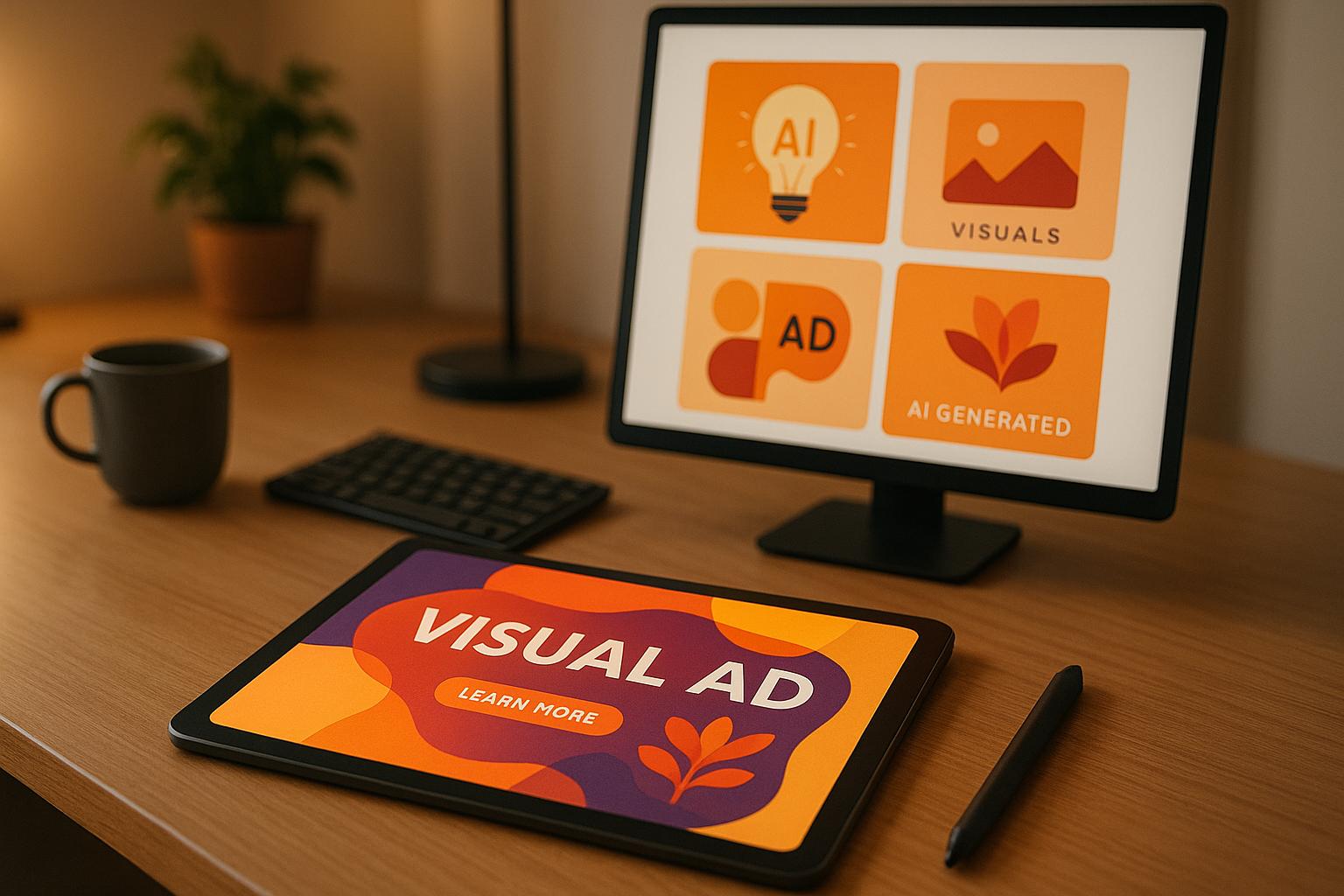How AI Improves Target CPA Bidding
AI has transformed how businesses manage Target CPA (Cost Per Acquisition) bidding by automating and optimizing the process in ways manual methods cannot match. Here’s what you need to know:
What is Target CPA Bidding?
It’s an automated strategy where advertisers set a desired cost per conversion, and platforms like Google Ads adjust bids to meet that goal.Why AI Matters:
AI processes real-time data and historical trends to make precise bid adjustments during every ad auction. This ensures campaigns stay aligned with CPA goals while reacting instantly to market changes.Key Benefits of AI-Powered Bidding:
- Real-Time Adjustments: AI can update bids multiple times daily, compared to manual methods that might adjust monthly.
- Smarter Targeting: AI predicts which users are most likely to convert, improving cost efficiency.
- Scalability: AI handles large-scale campaigns across platforms like Google, Meta, and Microsoft Ads, saving time and effort.
- Improved ROI: Studies show AI-driven CPA strategies can deliver up to 30% more conversions at the same or lower cost.
Example Tool:
Platforms like Feedcast.ai centralize campaign management, enhance product data, and generate ad copy using AI, helping advertisers meet their CPA goals efficiently.
In short, AI-powered Target CPA bidding offers faster, smarter, and more efficient ad management, making it a game-changer for businesses looking to optimize their ad spend.
Target CPA Bidding Basics
What Target CPA Bidding Does
Target CPA bidding takes the guesswork out of managing your bids by automating the process to help you achieve your desired cost per conversion. Instead of manually tweaking bids throughout the day, this strategy does the heavy lifting for you.
"Target CPA bidding is an automated bid strategy that sets bids for you to get as many conversions or customer actions as possible." - Google Ads Help [3]
Here’s how it works: Google Ads uses historical campaign data combined with real-time signals - like device type, location, browser, time of day, and browsing patterns [5]. Based on this, it predicts which users are most likely to convert and adjusts your bids during each ad auction to meet your target CPA [5].
While individual conversion costs may fluctuate - some higher, some lower than your target - the overall average should align closely with the CPA you’ve set [5].
You can use Target CPA in two ways: as a standard strategy for a single campaign or as a portfolio strategy applied across multiple campaigns [3]. This flexibility makes it suitable whether you're managing just one campaign or juggling several.
To calculate CPA, divide your ad spend by the number of conversions. For example, if you spend $1,000 and generate 20 conversions, your CPA is $50 [5]. Target CPA bidding works to maintain this ratio based on the goal you set.
For context, the average CPA for Search Ads across industries is $45.27, while for Display Ads, it’s $65.80 [5]. These benchmarks can help you establish realistic expectations for your campaigns.
What You Need for Target CPA to Work
While the concept of Target CPA bidding is simple, its success hinges on meeting a few critical conditions. First, you need sufficient historical conversion data. Without this, the algorithm won’t have enough insights to make informed decisions.
Accurate conversion tracking is also essential. Whether it’s purchases, sign-ups, or downloads, you need to ensure all valuable actions are being tracked correctly. Incomplete or inaccurate tracking can lead the algorithm to optimize for the wrong goals.
Another key factor is campaign segmentation. Group similar keywords or products together to maintain consistent CPAs [5]. For instance, mixing high-value items with lower-value ones in the same campaign can lead to skewed results and inefficient bidding.
Setting realistic Target CPA goals is equally important [5]. If your manual campaigns typically achieve a $60 CPA, setting a $30 target won’t magically cut your costs in half. Instead, it could restrict your traffic significantly.
Finally, let the algorithm do its job. Allow a seven-day learning phase before making major changes to your campaigns, budgets, or targets [5]. This gives the system time to gather data and optimize effectively.
Target CPA Bidding: Everything You Need to Know | Google Ads Tips

How AI Makes Target CPA Bidding Better
AI takes Target CPA bidding to a whole new level by transforming it into a dynamic, data-driven system. Unlike traditional methods that rely on periodic manual tweaks, AI processes real-time data to make precise adjustments for every auction. This level of responsiveness allows advertisers to fine-tune audience targeting and manage costs more effectively.
Real-Time Data Analysis and Bid Adjustments
One of the standout benefits of AI in Target CPA bidding is its ability to process and act on live data instantly. Take Google's Smart Bidding, for example - it uses "auction-time bidding" to optimize bids for each individual auction rather than sticking to static rules or schedules [6]. AI evaluates multiple signals in real time, such as device type, location, browser, time of day, and audience behavior. While manual bidding might only update sporadically, AI recalibrates bids multiple times daily, ensuring campaigns stay aligned with your target CPA [1].
This real-time optimization means campaigns can adapt on the fly. For instance, if AI detects that a particular audience segment in a specific region converts more efficiently during certain hours, it adjusts bids accordingly. This allows advertisers to capitalize on emerging opportunities without delay.
Smarter Audience Targeting and Predictive Insights
AI doesn’t just react to current data - it also predicts future trends. Using advanced predictive modeling, AI identifies high-value audience segments and forecasts their likelihood to convert [1]. Traditional targeting often relies on broad demographic categories, but AI dives deeper, analyzing behavioral patterns and conversion paths to pinpoint users who are more likely to take action. This precision helps advertisers achieve - or even surpass - their CPA goals.
As AI gathers more data from campaigns, its targeting sharpens. The result? Higher conversion rates and better cost efficiency. Google reports that advertisers using Smart Bidding strategies like Target CPA see an average 20% boost in conversions at a similar CPA compared to manual bidding [6]. AI also anticipates seasonal trends and market fluctuations, adjusting strategies proactively to maintain stable CPAs even during unpredictable periods. This foresight makes it easier to scale campaigns without losing control over costs.
Scaling Campaigns Without Breaking the Budget
Expanding digital ad campaigns often comes with a trade-off: rising CPAs as competition heats up and targeting widens. AI tackles this challenge head-on with automation that efficiently manages large-scale campaigns. It adjusts bids across thousands of keywords or ad groups automatically, ensuring campaigns remain optimized [1]. According to a 2024 industry study, AI-powered Target CPA bidding delivered up to 30% more conversions at the same or lower CPA compared to manual methods [4].
AI also fine-tunes budget allocation by channeling funds toward high-performing segments while cutting back on underperforming ones. This means you can grow your advertising efforts without seeing costs spiral out of control. Plus, by handling the heavy lifting of bid adjustments and budget management, AI frees up marketing teams to focus on strategy, creative work, and audience insights.
sbb-itb-0bd1697
Using AI Target CPA Strategies with Feedcast
Feedcast.ai simplifies the process of optimizing Target CPA strategies across multiple platforms. By combining product data, campaign management, and performance insights into a single, user-friendly platform, it helps you stay on track with your cost-per-acquisition goals. Let’s explore how Feedcast.ai can fine-tune your Target CPA efforts.
Centralized Campaign Management
Feedcast.ai brings all your campaigns together in one place. By linking your Google Ads, Facebook, Instagram, and Microsoft Ads accounts, you can monitor and manage everything from a single dashboard.
This centralized system allows you to track performance in real time, making it easier to spot which channels are delivering the best results. You can then shift budgets to maximize returns or scale up successful campaigns without juggling multiple platforms. For instance, if certain products consistently convert below your target CPA, you can expand those campaigns or reallocate resources - all from one interface.
Smarter Ad Creation and Optimization
Using AI, Feedcast.ai creates tailored ad copy designed to perform well on different platforms. By analyzing your product data, the platform generates messaging that resonates with specific audiences, giving your campaigns a strong starting point.
Beyond ad creation, Feedcast.ai continuously optimizes campaign performance. Its AI evaluates data from ongoing campaigns and applies insights to improve outcomes, ensuring you stay aligned with your Target CPA goals. Trusted by over 2,500 e-retail brands[7], Feedcast.ai has a proven track record of delivering results through data-driven strategies.
Enhanced Product Feed Management
Feedcast.ai also takes product feed management to the next level. Accurate and enriched product data is crucial for effective Target CPA bidding, and the platform ensures your feeds are in top shape. It uses AI to detect and correct errors automatically, while also improving product titles and descriptions to boost ad relevance.
With tools for bulk editing, you can save time on manual updates and use custom labels to organize product groups or fine-tune ad budgets. The platform’s analytics pinpoint high-performing products that convert below your target CPA, helping you allocate resources where they’ll have the most impact. At the same time, you can adjust strategies for underperforming items to improve their effectiveness[8].
AI vs Manual Target CPA Bidding
Grasping the distinctions between AI-driven and manual Target CPA bidding is crucial for refining your e-commerce advertising strategy. Each method comes with its own set of strengths and challenges, both of which directly influence your campaign's performance and the time you’ll need to invest.
Key Metrics to Measure Success
The metrics used to evaluate Target CPA campaigns are consistent across both AI and manual bidding approaches, but the way they are tracked and acted upon varies significantly. Cost per Acquisition (CPA) remains a critical metric, and AI systems excel by updating these numbers in real-time. Return on Ad Spend (ROAS) becomes more dynamic with AI, while conversion rates benefit from instant tweaks rather than waiting for periodic reviews.
Metrics like total conversions and spend pacing are also essential. AI-powered systems continuously monitor and adjust based on these metrics, offering a level of responsiveness that manual methods simply can’t match. While AI can react to changes in minutes, manual reviews often happen weekly or monthly, potentially missing key optimization opportunities[2][3].
The following table highlights the core differences between AI-driven and manual bidding strategies.
AI vs Manual Bidding Comparison
Here’s a side-by-side look at the capabilities of each approach:
| Feature | AI-Driven Target CPA Bidding | Manual Target CPA Bidding |
|---|---|---|
| Automation | Fully automated with real-time updates | Requires manual adjustments, less frequent |
| Scalability | Manages large or multi-channel campaigns with ease | Difficult to scale for larger campaigns |
| Accuracy | Uses predictive modeling for high precision | Relies on human estimates, which are less precise |
| Expertise Required | Minimal ongoing input | Requires consistent expert oversight |
| Optimization Frequency | Continuous and data-driven | Periodic, based on historical results |
| Time Investment | Low | High |
The standout difference lies in how frequently and effectively bids are adjusted. AI’s real-time responsiveness translates to better performance and tighter control over costs.
AI-powered systems can simulate up to 10 keyword scenarios - something manual methods cannot replicate[1]. This computational capability enables AI to analyze millions of signals during auctions, including factors like device type, location, time of day, and user behavior, offering a level of precision that’s unmatched.
Making Smarter Decisions with Data
The operational differences between AI and manual bidding extend to how data is used for decision-making. With AI, your focus shifts from constant bid management to analyzing trends and identifying larger strategic opportunities. Instead of monitoring daily fluctuations, you can concentrate on weekly or monthly performance patterns.
For instance, when CPA exceeds your target, AI automatically lowers bids, prompting you to investigate external factors like landing page performance or seasonal trends. Unified dashboards help you spot cross-channel patterns and pinpoint which products or audiences are underperforming against your target CPA.
Manual bidding, on the other hand, requires frequent keyword-level reviews and strategic adjustments based on past data. While this approach allows for nuanced decisions and insights that algorithms might overlook, it demands significant time and expertise to maintain, especially as campaigns grow more complex.
Ultimately, success with either method hinges on understanding what your data reveals about user behavior and market conditions. AI excels at processing massive datasets quickly, while manual approaches offer room for more tailored, context-specific decisions. However, as campaigns become more intricate, the time and effort required for manual optimization often make AI-powered systems the more practical choice[1][3]. These differences highlight how AI is reshaping digital advertising by offering faster, smarter, and more scalable solutions.
Conclusion: Target CPA Bidding's Future with AI
The future of Target CPA bidding is undeniably tied to AI, offering better performance with far less manual effort. While manual bidding typically updates around 1.25 times per month, AI-driven optimization can adjust bids up to 14 times within the same period. This means faster, more precise campaign adjustments that keep pace with changing market dynamics[1].
For e-commerce business owners, this shift transforms how advertising budgets are managed. Instead of relying on outdated manual methods, AI uses real-time data to make bid adjustments quickly and efficiently[3]. This frees you up to focus on long-term strategy and business growth, rather than the daily grind of bid management.
A great example of this evolution is Feedcast.ai, which combines AI-powered Target CPA bidding with an all-in-one campaign management platform. With Feedcast.ai, you can monitor campaigns across Google, Meta, and Microsoft Ads from a single dashboard. Its AI tools also enhance your product feeds and automate ad creation, ensuring your campaigns deliver strong results. This streamlined approach not only simplifies campaign management but also helps increase productivity.
Many business owners using AI-powered platforms report significant improvements in productivity and more time to focus on scaling their businesses[1]. Instead of being bogged down by bid adjustments, they can spend their energy on understanding customer needs, expanding product offerings, and driving growth.
As digital advertising becomes more complex, the gap between AI-driven and manual bidding will only grow. Managing multi-channel campaigns effectively will require tools like Feedcast.ai, which offer real-time optimization and a competitive edge. The demand for such solutions makes AI-powered tools not just helpful but critical for staying ahead[1][4]. With free tiers and scalable pricing, platforms like Feedcast.ai make advanced AI technology accessible for businesses of all sizes.
The question isn't whether AI will outperform manual methods - it already does. The real question is how quickly you'll adopt these tools to stay ahead. Businesses that embrace AI-powered bidding today will be the ones capturing more conversions at lower costs tomorrow.
FAQs
How does AI identify users most likely to convert in Target CPA bidding?
AI uses historical data, user behavior trends, and contextual signals to anticipate which users are most likely to take specific actions, like making a purchase or signing up for a service. By processing this information in real-time, AI ensures ads reach the right audience at the perfect time.
This approach plays a key role in optimizing Target CPA (Cost Per Acquisition) bidding. It helps businesses hit their conversion targets effectively while keeping their spending under control.
What do I need to set up AI-powered Target CPA bidding successfully?
To make AI-powered Target CPA bidding work effectively, it's crucial to have a strong base of conversion data - aim for 15 to 30 conversions over the last 30 days. This amount of data gives the AI the insights it needs to adjust bids with precision.
Equally important is ensuring that conversion tracking is correctly configured. Combine this with targeting a variety of relevant keywords and audience segments in your campaigns. This diverse data allows the AI to refine its bidding strategies and improve overall performance. By covering these basics, you'll be well-prepared to leverage AI-driven Target CPA bidding successfully.
How does AI adapt to seasonal trends and market changes in Target CPA bidding?
AI fine-tunes Target CPA bidding by studying past trends and using predictive models to stay ahead of seasonal changes and market fluctuations. This means bids can be adjusted dynamically in real-time, keeping costs steady while delivering strong results.
For example, based on historical patterns, AI might raise bids during busy shopping seasons when demand spikes or scale them back during quieter periods. This forward-thinking strategy ensures campaigns hit CPA goals consistently and operate efficiently, even as market conditions shift.
Geoffrey G.




